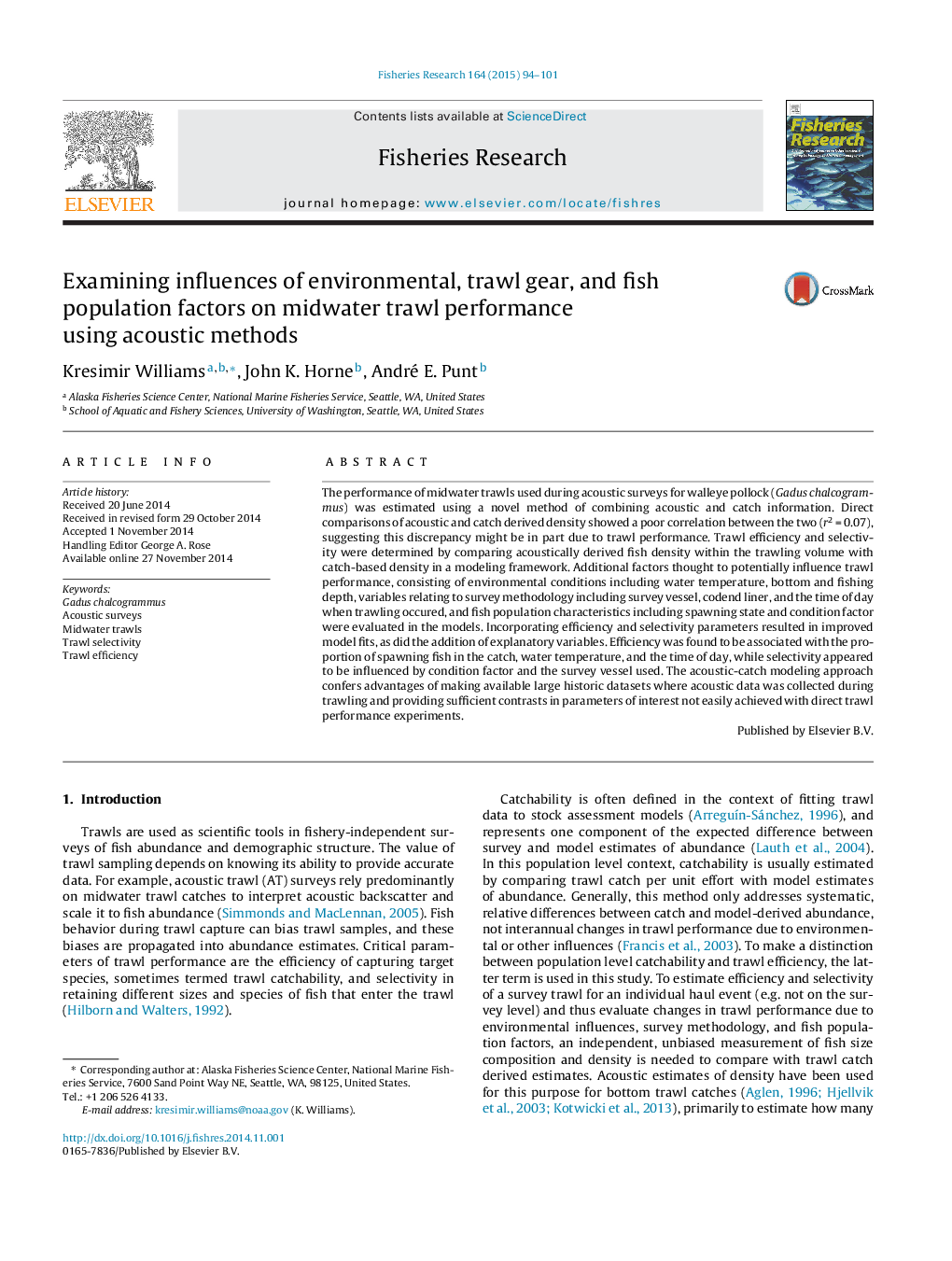| Article ID | Journal | Published Year | Pages | File Type |
|---|---|---|---|---|
| 6385669 | Fisheries Research | 2015 | 8 Pages |
The performance of midwater trawls used during acoustic surveys for walleye pollock (Gadus chalcogrammus) was estimated using a novel method of combining acoustic and catch information. Direct comparisons of acoustic and catch derived density showed a poor correlation between the two (r2Â =Â 0.07), suggesting this discrepancy might be in part due to trawl performance. Trawl efficiency and selectivity were determined by comparing acoustically derived fish density within the trawling volume with catch-based density in a modeling framework. Additional factors thought to potentially influence trawl performance, consisting of environmental conditions including water temperature, bottom and fishing depth, variables relating to survey methodology including survey vessel, codend liner, and the time of day when trawling occured, and fish population characteristics including spawning state and condition factor were evaluated in the models. Incorporating efficiency and selectivity parameters resulted in improved model fits, as did the addition of explanatory variables. Efficiency was found to be associated with the proportion of spawning fish in the catch, water temperature, and the time of day, while selectivity appeared to be influenced by condition factor and the survey vessel used. The acoustic-catch modeling approach confers advantages of making available large historic datasets where acoustic data was collected during trawling and providing sufficient contrasts in parameters of interest not easily achieved with direct trawl performance experiments.
